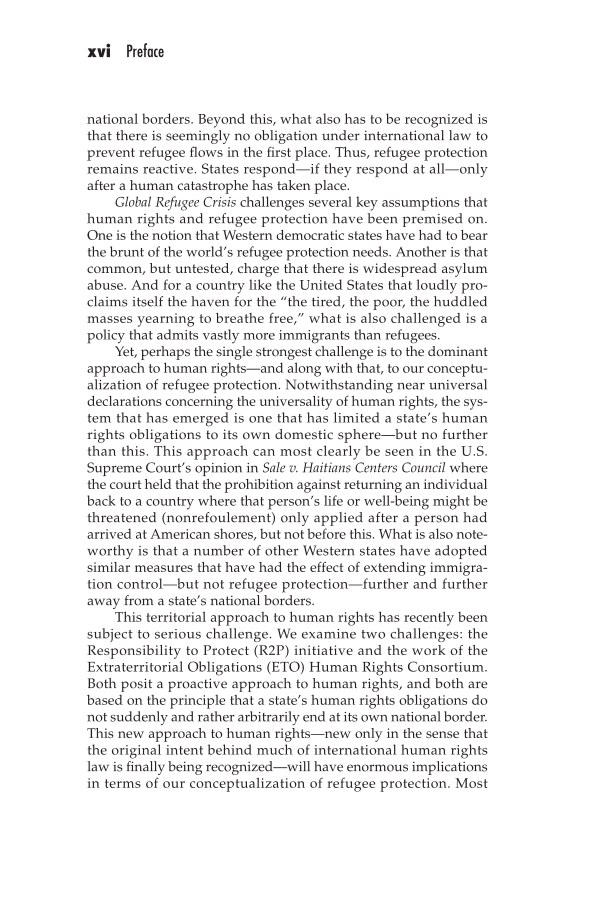national borders. Beyond this, what also has to be recognized is that there is seemingly no obligation under international law to prevent refugee flows in the first place. Thus, refugee protection remains reactive. States respond—if they respond at all—only after a human catastrophe has taken place. Global Refugee Crisis challenges several key assumptions that human rights and refugee protection have been premised on. One is the notion that Western democratic states have had to bear the brunt of the world’s refugee protection needs. Another is that common, but untested, charge that there is widespread asylum abuse. And for a country like the United States that loudly pro- claims itself the haven for the “the tired, the poor, the huddled masses yearning to breathe free,” what is also challenged is a policy that admits vastly more immigrants than refugees. Yet, perhaps the single strongest challenge is to the dominant approach to human rights—and along with that, to our conceptu- alization of refugee protection. Notwithstanding near universal declarations concerning the universality of human rights, the sys- tem that has emerged is one that has limited a state’s human rights obligations to its own domestic sphere—but no further than this. This approach can most clearly be seen in the U.S. Supreme Court’s opinion in Sale v. Haitians Centers Council where the court held that the prohibition against returning an individual back to a country where that person’s life or well-being might be threatened (nonrefoulement) only applied after a person had arrived at American shores, but not before this. What is also note- worthy is that a number of other Western states have adopted similar measures that have had the effect of extending immigra- tion control—but not refugee protection—further and further away from a state’s national borders. This territorial approach to human rights has recently been subject to serious challenge. We examine two challenges: the Responsibility to Protect (R2P) initiative and the work of the Extraterritorial Obligations (ETO) Human Rights Consortium. Both posit a proactive approach to human rights, and both are based on the principle that a state’s human rights obligations do not suddenly and rather arbitrarily end at its own national border. This new approach to human rights—new only in the sense that the original intent behind much of international human rights law is finally being recognized—will have enormous implications in terms of our conceptualization of refugee protection. Most xvi Preface
Document Details My Account Print multiple pages
Print
You have printed 0 times in the last 24 hours.
Your print count will reset on at .
You may print 0 more time(s) before then.
You may print a maximum of 0 pages at a time.
























































































































































































































































































































































